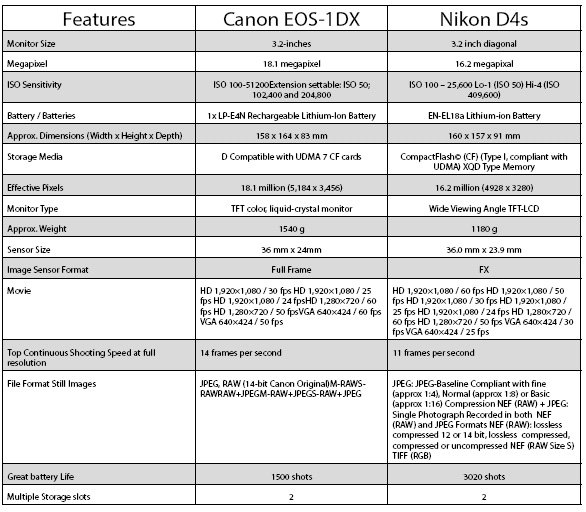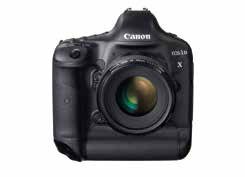articles/Review/flagship-page2
Hoist the Ensign - The Flagships Engage in Battle - part 2 of 1 2 3 4 5
by Mike McNamee Published 01/08/2014

On the matter of burst depth (ie how many frames can you shoot before the buffer fills and the camera stutters?) the situation is a little murky. The reviews are rather silent (or self contradictory) which is interesting because it was noticeable at the Tour de France that my D700 quite definitely ran out of puff before the peloton had passed by. Having said that the Canon can do 400 JPEGs and the Nikon 200 which should be enough for most causes! The D4s can do 176 Raw files which is an innovation. The D4s also has twice the battery frame life which is indicative or more efficient use of capacity. DxOMark who conduct well engineered experiments on image quality rate the D4s slightly higher but as we said at the outset such subtleties are probably lost in the mist when you throw focus, camera shake and cropping into the equation!
Suffice to say on all this - there ain't much difference between the two, both are fabulous cameras but neither should cause an established user to change ship. If you are a newcomer my advice is hold the cameras and go with what you like the feel of. Failing that add up how much you need to buy and compare what it is going to cost you - street prices not RSPs!
Canon 1Dx Initial thoughts and impressions
Regular contributor, Jon Ashton, recently changed up to the Canon 1Dx. Here are his impressions after using the camera out in the wild for a few weeks. His work is in stark contrast to that of our other 1Dx user in this issue, Domenic Aquilina, but when you get down to it, many of the requirements actually overlap.
The 1Dx weighs almost 200g heavier than a 7D with twin battery pack - this sounds a lot but in practice I have not noticed a difference at all because most rigs I carry are fairly weighty in any event, ie body and 500mm f4 or 100-400mm zoom or the 180mm macro.

Build quality, indeed, everything about the camera is well made and built to last. All controls are in familiar places and the handling of the camera is very intuitive because much of the ergonomic layout is similar to a 7D. A big advantage in program selection is that two controls have to be selected to change program so there is no longer any unintentional switching of programs as the camera is taken from a bag, etc.
The view finder is noticeably larger, brighter and clearer, the best I have ever seen; the information in the viewfinder can be tailored to individual need. Many of the operating programs and procedures can be tailored to individual needs; for example the metering system can be spot, centre biased or evaluative but you can set the camera to have any or all of these available to cycle through. The same goes for the AF pattern; there are five patterns, you may decide you are only likely to use three so you can select three for quick availability as opposed to having to cycle through five. Your preferences can of course be selected for the My Menu tab so all your key settings that you may require quick access to can be found quickly.
Please Note:
There is more than one page for this Article.
You are currently on page 2
- Hoist the Ensign - The Flagships Engage in Battle page 1
- Hoist the Ensign - The Flagships Engage in Battle page 2
- Hoist the Ensign - The Flagships Engage in Battle page 3
- Hoist the Ensign - The Flagships Engage in Battle page 4
- Hoist the Ensign - The Flagships Engage in Battle page 5
1st Published 01/08/2014
last update 18/07/2022 16:35:43
More Review Articles
There are 25 days to get ready for The Society of Photographers Convention and Trade Show at The Novotel London West, Hammersmith ...
which starts on Wednesday 14th January 2026








